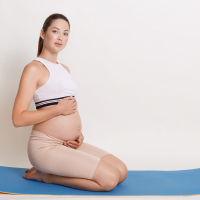
What is the issue?
Malposition is when the back of the baby's head lies towards the mother's back. As a result, labour and birth can be long and difficult, sometimes resulting in an operative birth (where the baby is delivered by caesarean section or with special tools to help the baby through the birth canal) and more perineal trauma (damage to the pelvic floor). The baby may be more likely to go to a neonatal care unit. Also, women may experience stress or disappointment with the birth experience.
Why is this important?
The way a pregnant woman is positioned during labour may help rotate a baby so that the back of the baby's head lies towards the front of the mother's abdomen. This improved position may help the mother and baby have a more normal labour and birth. However, it is not yet known which posture, if any, is effective and when is the best time to use it.
A systematic review of studies of positions (postures) used by women in labour with a baby in a malposition can provide answers on whether the postures improve birth and other health outcomes for mothers and babies. The summary of this review can be used to update clinical practice guidelines.
A Cochrane Review in 2007 reported that the use of the 'hands and knees' posture in labour was ineffective for malposition, but it did reduce labouring women's backache. Since then, more trials have been conducted, some using other postures; these need evaluating to see if those postures work.
What evidence did we find?
We searched for evidence (published to 13 July 2021) and identified eight studies in nine different countries involving 1766 women and their babies. Women in the included studies were either first-time mothers or mothers who had birthed before. All the women's pregnancies were at least at 36 weeks.
The trials compared use of 'hands and knees' posture or 'side-lying' (lateral) postures (lying on the same side as the baby, lying on the opposite side to the baby, and lying semi-prone) to other postures (free posture, lying on back, leaning back, lying on the same side as the baby).
For both the hands and knees posture and side-lying positions during labour, there may be little or no difference in the numbers of operative births, haemorrhage (profuse bleeding of the mother), severe perineal trauma, and women's satisfaction with their labour and delivery, but there was insufficient evidence to be sure. Many of our outcomes of interest were not reported in the included studies.
Overall, we have little to no confidence in the evidence, mainly because there were too few women and babies in the studies, and some studies used unclear methods.
What does this mean?
Overall, it is uncertain whether hands and knees or side-lying positions in labour improve the health of mother and baby when a baby is in a malposition. However, if women find the use of hands and knees, side-lying, or other postures in labour comfortable, there is no reason why they should not choose to use them.
Further research is needed to enable optimal fetal positioning. In particular, further research is needed on variations in the postures, the impact of longer use of these postures during labour, and on long-term outcomes for women and their babies.

